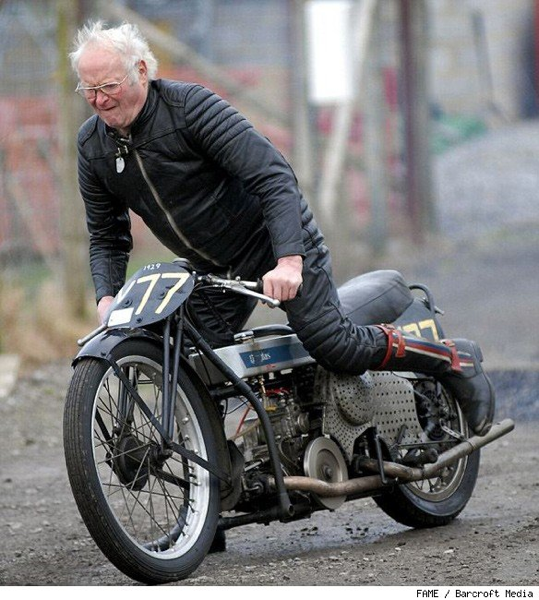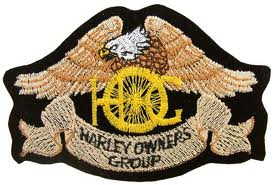Two weeks ago I came down with a cold, and a week ago I was diagnosed with a lung and sinus infection. The doctor said it was probably a variety of “mild” pneumonia, what is sometimes called “walking pneumonia”. So I’ve been coughing, clearing my sinuses, and generally feeling crappy.
On the plus side, the weather has been generally unpleasant as well. That sounds funny, I know, but for me there is nothing worse than being sick when it is beautiful and sunny and the birds are singing: it just feels doubly unfair. There were a couple of decent days this week, today not being one of them: however, it wasn’t raining, and I was feeling a bit better. This meant that was overwhelmed by a desire to get out on my motorbike, which I did.

Six months on a Harley: my thoughts
I’ve been riding my Road Glide for six months now, a bit over 4,000 kilometers. Three of those months were winter months during which I only got out for two wheel therapy a couple of times. However, I feel I’ve had enough opportunity to ride the Road Glide Ultra to go beyond first impressions. On that basis, I’m rounding up my observations of the Harley Davidson FLTRU:
- Comfortable: This is a bike that is meant for longer rides. The frame mounted fairing and lowers, along with Harley’s newer touring frame, provide a rock steady and “planted” feel. Things that tossed my Vulcan around like wind gusts and road tar “snakes” are basically ignored now. I felt this the first time I test drove the Road Glide, and nothing has changed my feelings.
- Deeply Powerful: The big 103 CI (1688 cc) engine has tons of power. 102 foot pounds, and something bordering on 100 horsepower, is nothing to laugh at. But this is also a big, heavy bike: people looking for racetrack experiences should look elsewhere. But for me, the low-revving, high-torque Harley engines are a perfect fit. At highway speeds of around 100-120 km/h, I can run in 5th gear at around 3000 RPM with comfort and ease. I still have another gear to go if I want even lower revs, but generally 6th is reserved for 120+ km/h. I should note that I find the Road Glide far easier to ride in the 120 km/h range than my Vulcan: at those speeds, the Vulcan started feeling a bit scary for me. Not so the ‘Glide
- Excellent fit and finish: After six months, everything is still where it belongs. Nothing shakes loose, nothing has cracked, chipped, or started to fail. All the latches and clasps close and open as easily as they did the first time. Every time I wash the bike I find new and satisfying aspects of the build quality: deeply chromed metal, smoothly finished welds, and heavy-duty bolts and fittings. The Vulcan, on the other hand, disappointed me: I’d find wobbly bits, plastic pieces where I didn’t expect them, and bolts that looked under-engineered. I’m certain that the Vulcan is well designed, but even pieces you can’t see easily on the Harley are heavy, solid, and impressive
- Engine and drive train is solid: The late-model (i.e.: after the ’90’s) Harley engines seem very robust, and the engine on my Road Glide has been no exception. Every time I crank it over, it rumbles to life like some sort of sleepy tiger, slightly irritable but ready to prowl. And that sound…well, I don’t like it loud, but I do like that Harley grumble. It’s uneven, eccentric, intentionally engineered to sound more raw than it is, and yet truly refined at travelling speed. It puts me in mind of the sound my brother Ron’s over-bored and race track ready Chevelle SS engine made, and that’s a good thing
- Expensive to service: I haven’t had a single problem with my Harley thus far. But regular service is expensive: oil and inspection is about 30% more on my Road Glide than on the Vulcan. Of course you can do it yourself and save lots ($100 per hour shop charges add up fast), and in a year or two I will probably start doing at least every second oil change myself. But the cost of the bike doesn’t mean you get any savings on the service costs: exactly the opposite
- Incredible sense of joining a “club”: You buy your Harley, and you get a year of membership in the Harley Owners Group. For that, you get a never ending stream of reminders that you “belong” to some sort of community. Patches, pins, annual touring books with hundreds of pages of high quality maps and guides, monthly magazines… and everything is of top quality. The pins are a small example: there is a membership pin, and a mileage pin, both of which are of the sort of quality you’d spend five or ten bucks for. Then you get annual “rockers” to chart your membership years, as well as mileage “rockers” for major milestones. Even without the HOG membership, I receive a monthly catalog or letter from Harley reminding me of that big bike waiting patiently for the next ride


- Addictive and expensive accessories: I find it increasingly hard to stop myself from buying Harley branded gear. I like to shout out a bit that I ride a Harley, but that’s only part of it. Everything I’ve bought that has a Harley logo on it has been good quality. As an example, the luggage rack on my trunk is very well constructed. But you have to be careful: some things, especially the Harley-branded helmets, are just mass-market products with a Harley logo and 50% price bump added
- Incredibly massive: this isn’t a comment about the Road Glide specifically, but about big touring bikes in general. They are frickin’ huge. This is 900 pounds of bike: if you miss your balance point and it starts to go over, it’s damn hard to keep up. I could easily use another 20 pounds of muscle, but even if I looked like Arnold Schwarzenegger I think I’d still find the weight of this bike formidable. All of this mass means that the bike sits firmly on the road, and that is great for touring. But it also means it isn’t the kind of bike you slalom through traffic, or whip through chicanes at breakneck speed. The Road Glide is extraordinarily handy at low (parking) speeds for a bike its size, but you have to make allowances for that always-present mass waiting to overpower you. For a new rider like me, it can be scary at times: a few degrees of lean while pushing the bike around can lead to far more weight than I can handle coming down. It’s intimidating, and if there is one regret I have it is this- the bike I love can turn into a real beast very fast. I’ve had it on its side two or three times on our 20% incline driveway as an indirect result of trying to scoot it along the sidewalk beside the house. There are few things more scary than trying to put a bike this size back upright when it wants to go sliding back down a hill. Inclines, low speed, sharp curbs, soft ground, 6 inch clearances, and immovable obstacles: any one or two of these is fine, but too darn many calculations and risks can overwhelm me. Lessons learned- in a perfect world, I would have decades of experience with bikes of increasing size and weight under all sorts of conditions before owning my Road Glide
More miles to go
Six months isn’t a terribly long time, and I’ll likely be revisiting this topic as milestones pass in the future. But overall I’m very happy that I bought the Harley Davidson Road Glide Ultra. It’s the right bike for me at this stage in my life. I’m looking forward to a couple of multi-thousand-kilometer trips this year, during which I’ll presumably learn a great deal more.
